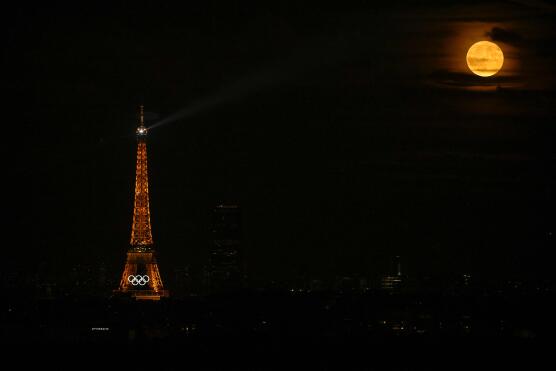
Paris — The decision by Paris Mayor Anne Hidalgo to keep the Olympic rings on the Eiffel Tower has sparked strong criticism from the descendants of the tower’s designer, Gustave Eiffel, as well as backlash from some Parisians.
Hidalgo’s announcement on Saturday that she intends to replace the original rings, which were installed during the Olympic Games, has raised questions about the impact on the historic monument.
The Eiffel Tower, which was originally erected for the 1889 World Fair, has become a symbol of Paris and a UNESCO World Heritage site.
The giant Olympic rings, which adorned the tower from July 28 to August 11, were a hit with visitors and tourists. However, Hidalgo’s proposal to retain a version of the rings beyond the Paralympic Games, which conclude on September 8, has been met with opposition.
The Association of Gustave Eiffel’s Descendants, led by Olivier Berthelot-Eiffel, a great-great-grandson of the engineer, has voiced strong objections.
“It does not seem appropriate to us that the Eiffel Tower, which has become the symbol of Paris and the whole of France since its construction 135 years ago, has the symbol of an outside organization added to it in a permanent way, whatever its prestige,” the association stated.
Berthelot-Eiffel expressed the family’s willingness to allow the rings to remain for a brief period but opposed any long-term alteration.
“The Eiffel Tower should not become an advertising outpost. Anne Hidalgo should have consulted with the Paris council and relevant individuals before making such a decision,” he told Agence France-Presse.
Culture Minister Rachida Dati, a frequent critic of Hidalgo, also weighed in. Dati highlighted the need for adherence to legal protections for historic buildings.
“The Eiffel Tower is a protected monument, the work of an immense engineer and designer. Protections for its architectural merit require authorizations and an impact study before any major modifications can be carried out,” she stated.
The proposal has also drawn mixed reactions from the public. Many Parisians have expressed reservations about altering a symbol that has stood for over a century.
The SOS Paris group, dedicated to preserving the city’s landmarks, criticized the idea, arguing that “the Eiffel Tower has a history of 135 years and surpasses a sports and media event of 17 days.”
Paris MP Sylvain Maillard echoed these concerns, describing the decision as a “mistake.” He emphasized that while the Olympics were a significant event, the Eiffel Tower represents something timeless and enduring.
In response to the backlash, Hidalgo defended her decision, asserting that she has the approval of the International Olympic Committee (IOC). “I want to keep the rings, and the decision is up to me,” she told the Ouest-France newspaper.
The Eiffel Tower, initially intended as a temporary structure, has become a global icon and a major tourist attraction, drawing 6.3 million visitors in 2023. Originally reviled by some locals, it has evolved into a beloved landmark symbolizing Paris’s architectural and cultural heritage.
As the debate continues, the future of the Olympic rings on the Eiffel Tower remains uncertain, reflecting broader tensions between preserving historical monuments and embracing contemporary symbols of global events.